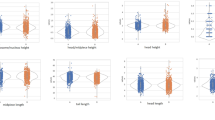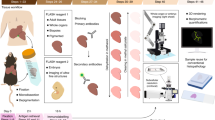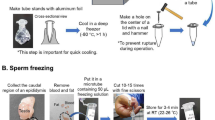Abstract
Lasley, Easley and McKenzie1 have shown that the increased staining propensity of dead cells may be used to obtain a quantitative estimate of the proportions of live and dead spermatozoa in freshly ejaculated ram semen, and have described a technique of staining with Opal Blue and Eosin which employs this principle. They have also emphasized that the imposition of temperature-shock on test ejaculates by sudden cooling is accompanied by an increase in the proportion of stained spermatozoa. In their studies, shock effects due to differences of temperature between semen and stain at the time of mixing were rigidly excluded, and no subsequent attempt has apparently been made to determine the critical level at which such temperature effects may be encountered, or to express in quantitative terms the degree of shock encountered at different temperature-levels.
This is a preview of subscription content, access via your institution
Access options
Subscribe to this journal
Receive 51 print issues and online access
$199.00 per year
only $3.90 per issue
Buy this article
- Purchase on Springer Link
- Instant access to full article PDF
Prices may be subject to local taxes which are calculated during checkout
Similar content being viewed by others
References
Lasley, J. F., Easley, G. T., and McKenzie, F. F., Anat. Rec., 822, Supp. No. 1, 167 (1942).
Lasley, J. F., and Bogart, R., Mo. Agric. Exp. Sta. Res., Bull. 376 (1943).
Author information
Authors and Affiliations
Rights and permissions
About this article
Cite this article
HANCOCK, J. A Staining Technique for the Study of Temperature-Shock in Semen. Nature 167, 323–324 (1951). https://doi.org/10.1038/167323b0
Issue Date:
DOI: https://doi.org/10.1038/167323b0
This article is cited by
-
Optimized addition of nitric oxide compounds in semen extender improves post-thaw seminal attributes of Murrah buffaloes
Tropical Animal Health and Production (2023)
-
Current Updates On the In vivo Assessment of Zinc Oxide Nanoparticles Toxicity Using Animal Models
BioNanoScience (2021)
-
Y353/B: a candidate multiple-copy spermiogenesis gene on the mouse Y chromosome
Mammalian Genome (1994)
-
Disintegrated Spermatozoa from the Epididymis
Nature (1961)
-
Dark-Ground Illumination of Ram Spermatozoa
Nature (1953)
Comments
By submitting a comment you agree to abide by our Terms and Community Guidelines. If you find something abusive or that does not comply with our terms or guidelines please flag it as inappropriate.



